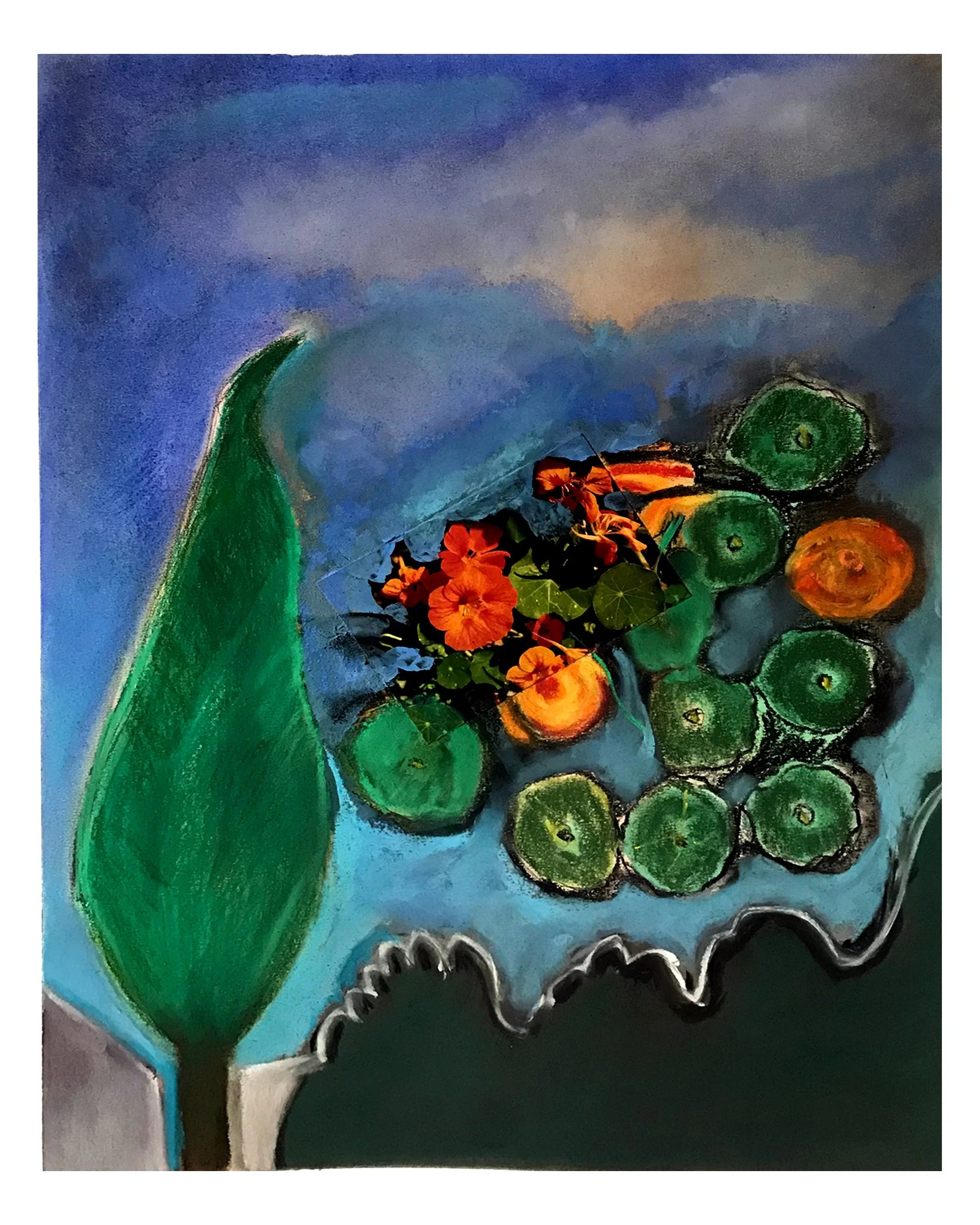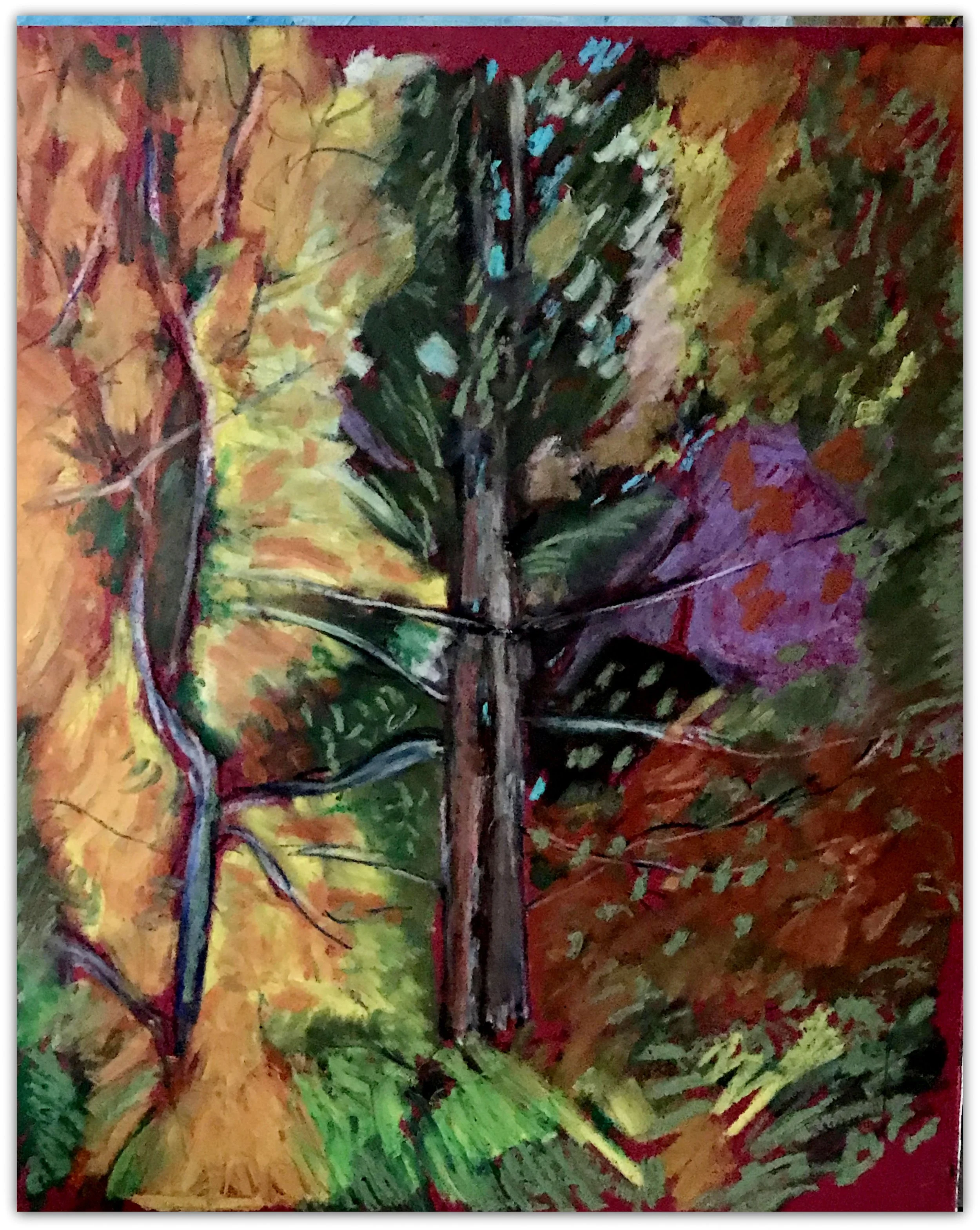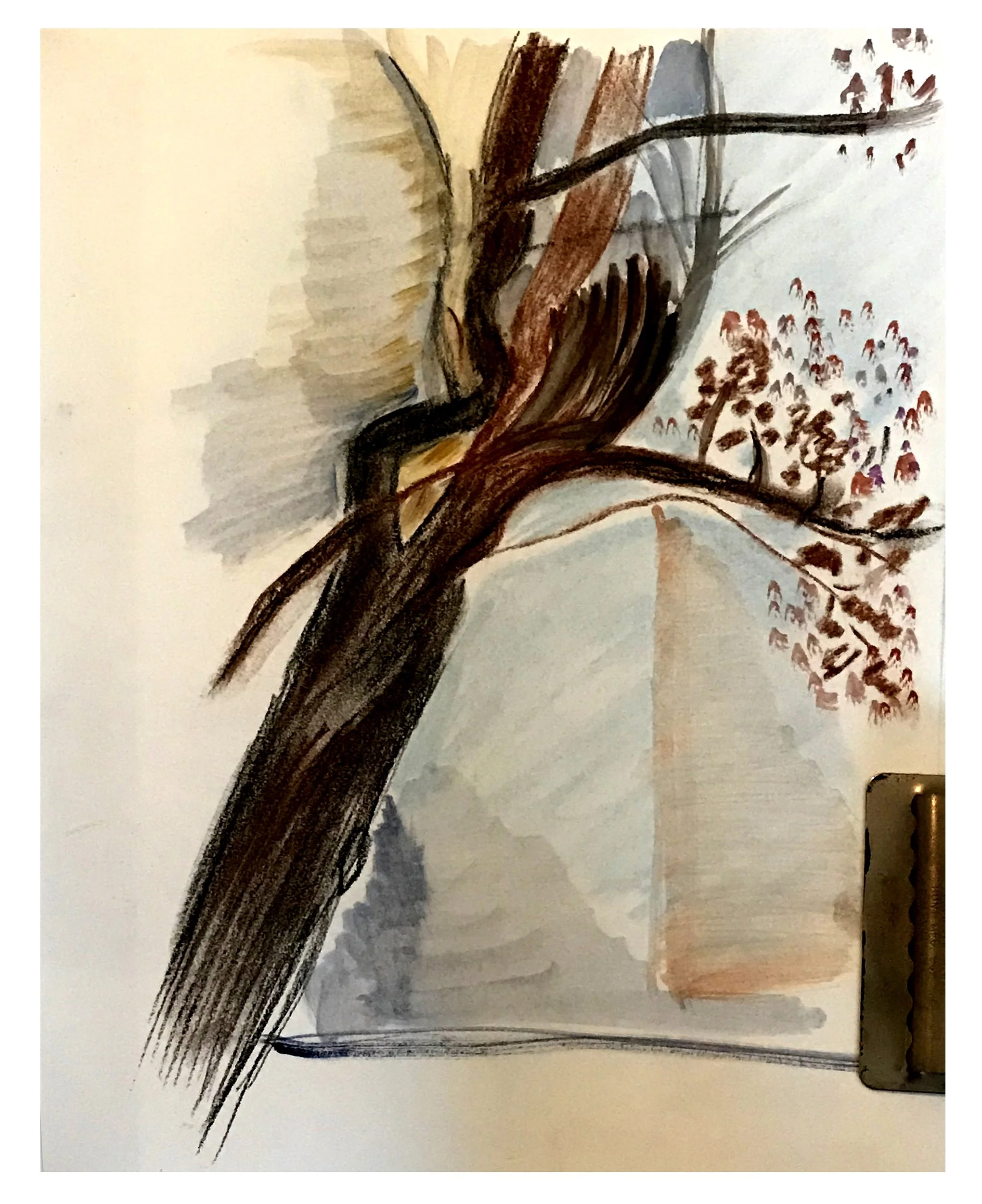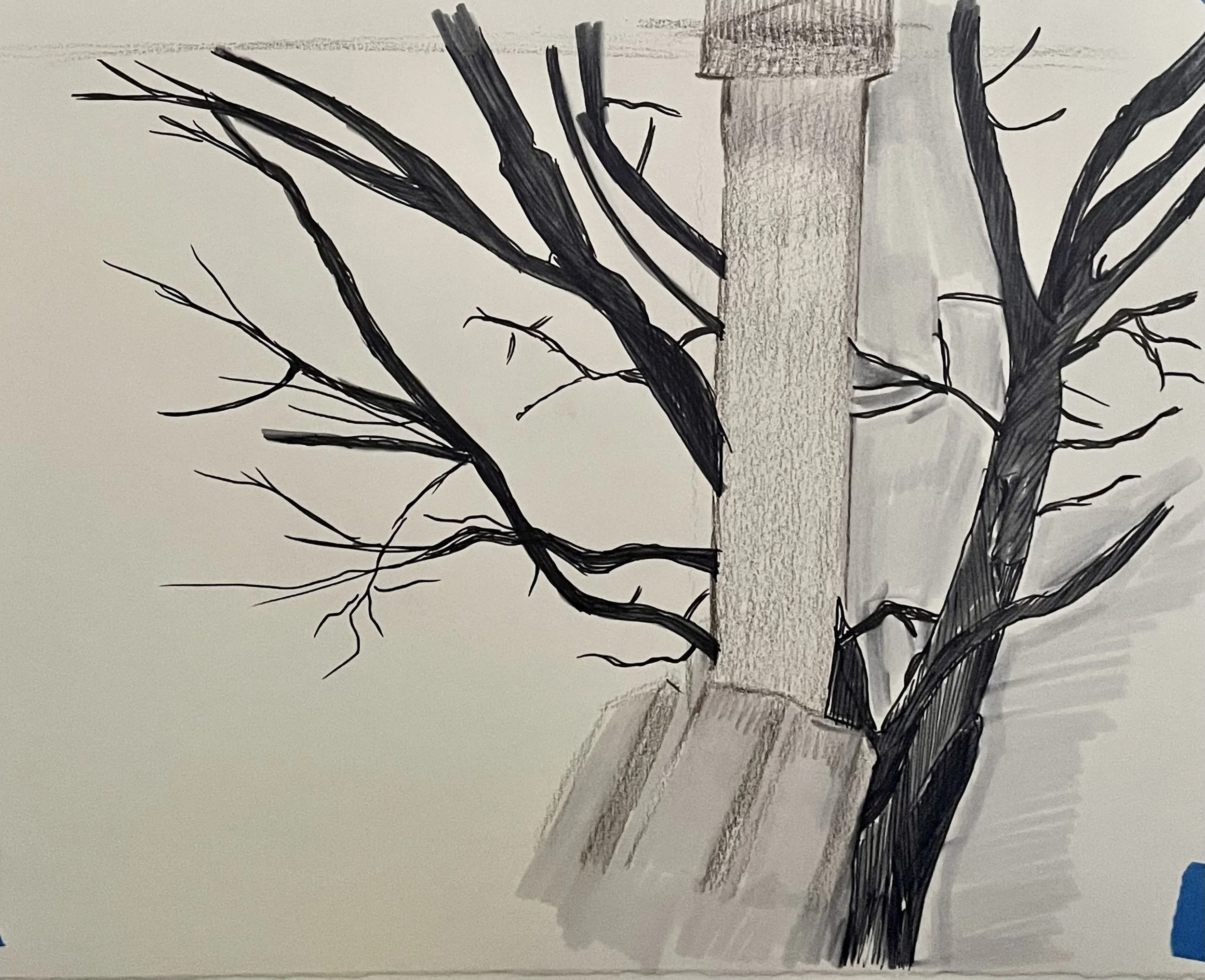Interview with Nira Chorev
Born in Boston, MA in 1952, Nira Chorev was raised and received her general studies and arts education both in United States and Israel. From 1972-1974 she attended and graduated from the Art Teachers College in Israel, receiving a BA degree, and from 1974-1978 she attended the School of the Museum of Fine Art (SMFA), in Boston, MA receiving multiple degrees -Diploma (BFA) and Fifth-Year Post-Graduate certificate.
While in the Fifth-Year Post-Graduate studies program she was an assistant to both printing and drawing classes and won a traveling scholarship which she used to revive her photographic work and merge it with the work she was doing in silk screen printing class. Her early work on large canvases was in acrylic, looking at landscapes from a bird’s-eye view, seeing the contrasting forms in color, and focusing on the positive and negative shapes in space.
After several decades in Israel, she returned to the United States in 2008 to attend the Continuing Education Program and Workshops at the School of the Museum of Fine Art (SMFA). Currently she is living in the Boston area and working in mixed media, using photos to capture moments as memories that trigger the landscapes that are created from them. The works express the continuous connections between the artist and nature; the positive and negative shapes in space; and the reminder of how things were.
In Europe her artwork has been exhibited at The Royal School of Art in London, the Esart Gallery in Barcelona, the Madrid Exhibition Center, Spain, and the Glicksman Gallery, Zurich, Switzerland. Public and Gallery Exhibitions of her artwork in the United States include Emerging – Boston City Hall Gallery, Boston, MA; Mayyim Hayyim Gallery, Newton, MA – In Memory of Yitzhak Rabin; NAVE Gallery, Somerville, MA; Art Takes Times Square, NYC; the Kennedy Center, Washington, DC; Art Expo, USA, NY; Boston’s Resnikoff Gallery and the SMFA Grossman Gallery; The Studio Gallery, Irvine, CA.; Post Office Gallery, Inc., North Truro, MA.
Can you tell us about the moment you decided to pursue a career as an artist?
From my earliest childhood, I knew that I wanted to be an artist. I lived with my family on my grandparents’ farm. My grandmother, who was an embroidery artist, taught me how to see: the difference between leaves facing the sun that had a shinier color than the lower leaves, which were pale and dull; how flowers change their color as the hours pass; how the wind moved through the tall grass in the fields outside our house; the migration of the birds, and the drifting clouds in the blue sky. She amazed me every time she started to embroider the flowers in the garden on a piece of fabric, freeform, using no lines or marks to guide her needle.
My first block of paper and colored pencils were given to me by my grandfather to encourage me to start painting. Until today I have the first painting I did almost seventy years ago. Framed by my grandfather, it hung in their home for decades. Today it hangs in my studio where it reminds me of the love and encouragement of my grandparents.
What kind of an artist do you ultimately see yourself?
I see myself as a mixed media artist. For me, mixed media is about breaking down the boundaries between traditional art forms such as photography, print, painting, collage, and fabric art. I love the challenge of playing with and combining different layers of materials into works of art (either standalone or in a series) that explore a particular theme.
What do you want your art to convey to the people who see it? What is the meaning or creative motivation behind your work?
They say that artists, poets, writers, and musicians look at the world with different eyes from everyone else, that we relate to life differently. I believe this to be true. As I go about my day, I am drawn again and again to the smallest details of the natural world around me – the straight lines of the pine needles crunching underfoot, the tiny flower that emerges from the soil with a burst of color, the way the sunlight glimmers on the rippling waves. In nature, I have found comfort, stability, and beauty, an antidote to balance the sorrow and loss I carry with me from my own life experiences. Using my camera, I collect these scenes as memories that I will use and develop as part of my artwork. At the same time, by looking at nature and its cycles of loss and renewal, I have learned that life is stronger than death. Through my art, I want people – no matter what their life experiences have been -- to be able to sense the unending possibility of rebirth, joy, and fulfillment.
Can you tell us about the process you use to create your works?
I usually begin from a photograph, which becomes the central motif but which ultimately is integrated into the overall painting. Using a new technique, I paint and draw with soft pastel directly onto the photo, its lines and images continuing across the surface of the painting with watercolor and Indian ink. As the composition develops, I look at it from every angle, seeking a sense of balance till I achieve the “golden cut,” that moment when I know the painting is complete and I can hear its music play.
Typically, I work in series, each one devoted to a theme drawn from nature or an aspect of human experience. In every series, I use the same photos again and again as a starting point, each time exploring the theme from different angles. Over the course of a series, individual elements may recur and come to life in different contexts, each painting drawing on my own life experiences, and the series as a whole telling a story in color, shape, and line.
Sometimes, between series, I create a standalone piece. This gives me the opportunity to experiment with different techniques, create a range of new colors in soft pastel, and to incorporate different media like papier mache into three-dimensional elements in the overall artwork. In the process, I am free to push beyond my own limits and continue to explore the endless possibilities of mixed media. The sky is definitely not the limit.
What is your typical workday routine?
I enter my studio in the morning and hang one or more pieces that I was working on the day before on the wall. Sipping a cup of tea or coffee, I gather my thoughts and write notes to myself, and then, with classical music in the background, I start to work. Once I am painting, I’m transported to a different world, only stopping to take a break while the toxic fixative is drying on the soft pastels or to grab a quick bite to eat. I tend to work between six and twelve hours per day, often into the wee hours of the night.
It’s a must for me to have my studio in my home. This allows me to enter the studio whenever I feel the need, to look again on the work I accomplished during that day, and to write some notes and pin them on the board to remind myself of my last thoughts before going to sleep. This is a work guideline that I was taught by one of my teachers many years ago that continues to serve me well.
Where do you find inspiration?
I find inspiration in my daily life, looking outside my window, driving to the grocery store with my friend, cooking, reading a book, watching chipmunks running across the grass, hearing the rumble of passing streetcars, the sight of the parked cars as a flock of geese with their chicks crosses the busy road, the way the winds blow the leaves on the ground, working in the garden, smelling the rose bush, eating mango, the cypress tree in my parents’ backyard, sitting with my dad waiting for the sunset, looking at the spectacular changes of color in the sky and listening to the singing of the birds as dusk descends . All of these trigger my imagination and give me inspiration to create.
What motivates you to create?
As an artist, I feel a continuous urge to bring to life what I see, feel, and experience. Beyond my own experiences in the studio, it has been important to me to be part of a community of artists who share ideas, support and critique each other’s work, and help one another to enter and navigate the complexities of the contemporary artworld. For decades, my teachers have continued to play an invaluable role in my artistic development. Over the years, teachers who became my most important mentors continued to challenge and encourage me – first to dare to keep exploring, to find my own visual language of marks and colors, and to plumb my own depths in order to become a unique mixed media artist. Their voices and their belief in me have been a critical motivation in my development as an artist.
What has been your most outstanding achievement to date?
My most outstanding achievement to date has been my ability to shift the way I created art for years to what I do now, moving from realism to abstraction to mixed media. In doing so, a new world of options opened in front of me. I could not have succeeded as a mixed media artist today without having built the foundations I learned over a long period of study with the best art teachers in the world. Coming from distinct artistic backgrounds themselves, each of them taught me a different visual language, while urging me to seek my own unique artistic signature. “Be determined,” they all said. “Seek your own path and a direction that fits your artistic needs; develop each concept in all directions; constantly strive to get better and be more daring, because this is the only way you will find your individuality as an artist.” They were right.
What are your ultimate career goals?
My goal is to be recognized as a highly regarded mixed media artist whose body of work exemplifies excellence, creativity, and balance in the creation of art that tells a story – in color, line, and shape – that will inspire its viewers.
What are you working on now, and what can we expect from you soon?
In the last few months, I have been working on a series entitled “Homes on a Journey.” The name for this body of work, currently fourteen pieces and counting, comes from a poem that was written by a dear friend, who shares with me the experience of living in two countries. Over the past decade, I have traveled back and forth overseas, splitting time between my father’s home abroad and my own home here. The constant travel has given me different perspectives on distance and place, so that over time the houses, the sunrises and sunsets, the trees and flowers, and the distance between them, all move and merge into each other and turn into one big landscape that has no boarders. Through this expansive understanding of home, which shifts and moves along with life’s ever-changing contexts, the series also draws upon and responds to the poet’s descriptions of the sea and mountains, as seen through the window of her second home abroad, asking: where is home and whose journey is it? I will continue working on this series until the “music sings for me.”















